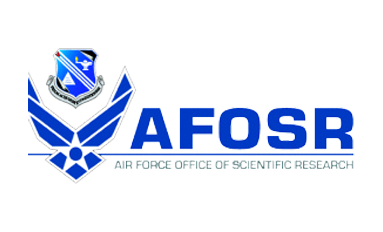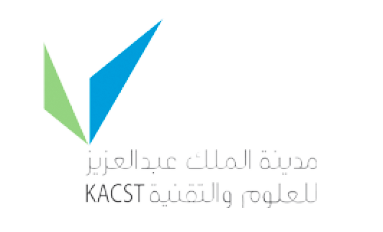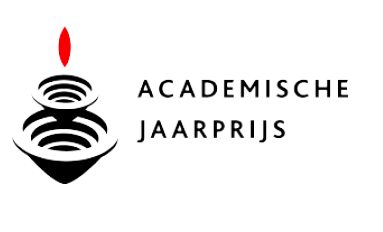Welcome at the Lentink lab!
Bio-Inspired Research & Design
David's messages
Are you passionate about aerial robot design and biomechanics of flight? Applications are invited for a fully funded PhD position with Prof.dr.ir. David Lentink in the Biomimetics Group at Groningen. You will become part of a project in which our team studies how birds fly in turbulence by dynamically shape-shifting their body. In the project you will be responsible for translating bird biomechanical insights into your advanced biomimetic aerial robot that can fly like a bird. We seek a PhD candidate who is passionate about curiosity-driven research, designing and flying bioinspired robots, and reading and writing broadly accessible multidisciplinary research papers about it. More information & APPLICATION LINK.
Three years ago I moved my lab and the research infrastructure at Stanford University to The Netherlands to setup new bird aviaries, refurbish my research lab & and modernize my maker space at The University of Groningen. At Groningen, I lead the Biomimetics Group together with my colleagues and direct my biological research, engineering, and robot design lab in the Linnaeusborg. After completing the move, I am excited the Lentink Lab website now also got modernized! I redesigned the new “Lentink Lab” website to communicate previous and current research with peers, media and anyone interested, in a freely accessible format. I hope you enjoy the new functionalities and look forward to updating you on my multidisciplinary work.
Colleagues at the University of South Florida and Berkeley made an exciting finding: wingless salamanders living in the crowns of old growth red wood trees perform directed aerial descent, featured in NYT. To highlight the remarkable find, I wrote a Nature News & Views feature to explain how their work helps paint the bigger picture of the evolution of flight. Over the years more and more research, including our own on foraging birds, show how generating drag first and lift second is a mechanistically more plausible explanation for the evolution of flight. Lacking wings, the salamanders must rely on using their body to generate drag to balance their weight and slow down while also generating a bit of lift, which enables them to steer and direct their aerial descent back to the tree.
Video overview
AAAS Video
ARBOREAL FLIGHT | DINOSAURS
We see birds hop and fly effortless between tree branches every day, something no robot can, how they do it? Diana Chin discovered that parrotlets choose their take-off angle to minimize the mechanical energy needed to fly between branches. She determined this using instrumented perches, an Aerodynamic Force Platform, high-speed cameras and modeling. She also found that dinosaurs may have used partial wingbeats with protowings to extend their long-jumps between branches. The insights shows how to optimize bimodal robots for arboreal environments. The publication in Science Advances was covered by Scientific American Popular Science and New Scientist.
How Hummingbirds Hum
COLLABORATION | STANFORD, TU/E & SORAMA
How Hummingbirds Hum – a research by Stanford University, TU/e and Sorama
Together with Stanford University and Eindhoven University of Technology, we researched the pleasant humming sound of the hummingbird when it hovers in front of flowers to feed. By using a total of 2176 microphones the team of engineers succeeded in measuring the precise origin of the sound generated by the flapping wings of a flying animal for the first time. With this article we want to take you through the research, show you more about the technology and explain how we can use this study to improve products, like drones, and make them quieter.
UPenn Seminar
DAVID LENTINK | “AVIAN INSPIRED DESIGN”
My lab focusses on understanding every aspect of bird flight to improve flying robots—because birds fly further, longer, and more reliable in complex visual and wind environments. I use a multidisciplinary lens that integrates biomechanics, sensorimotor control and organismal & evolutionary biology with aerospace engineering, robotics and aerodynamics to advance our systems understanding of avian flight. The experimental approaches range from flying birds in custom-designed flight arenas, scanning their 3D shape at high-speed and unraveling their musculoskeletal control strategies to making innovative direct aerodynamic force measurements in flight. I will show how these and other ongoing studies in my lab have inspired new biohybrid soft morphing aerial robots that we design and fly in my lab.
Amazing Birds
DAVID LENTINK | THE MAGIC OF BIRD FLIGHT
There’s so little we understand about how birds fly. Through incredible photography and observations in his lab’s wind tunnel, engineering professor David Lentink highlights rarely detected bird behavior. By studying nature, his lab seeks to build better drones. David Lentink is an assistant professor of mechanical engineering and member of Bio-X, an interdisciplinary biosciences institute at Stanford. Professor Lentink’s multidisciplinary lab studies biological flight—bird flight in particular—as an inspiration for engineering design. He serves as a member of the Young Academy of the Royal Netherlands Academy of Arts and Sciences and received the Dutch Academic Year Prize for the Flight Artists, in which Professor Lentink crowdsourced high-speed camera footage to capture flight movements. In 2013, the World Economic Forum named him one of 40 scientists under 40. His publications range from technical journals to cover publications in Nature and Science.
Stanford News
AERIAL ROBOT DESIGN | COURSE
One of the classes taught by David Lentink is ME 171E / 271E Aerial Robot Design. It is a result-focused introduction to the design of winged aerial robots capable of vertical takeoff and landing for a wide range of applications. Students learn how to ideate specific aerial robot applications and make an appropriate design from scratch that meets mission requirements. The hands-on lab experience includes prototyping the aerial robot mission, to inform system design, by building and flying autonomous quadcopters. This lab was developed with help from students in the Lentink lab, of which Eric Chang is featured in the Standford News video and Article.
BioGraphic
HUMMINGBIRD FORCES | INSTRUMENTS
How does a hummingbird stay afloat in air? To answer this question, Rivers Ingersoll developed a new Aerodynamic Force Platform. It’s capable of resolving the tiny aerodynamic pressure forces a hummingbird generates to lift its body weight of just 4 grams. Remarkably, his instrument is able to resolve the pressure forces the hummingbird generates within a single wingbeat, which only lasts 25 milliseconds. For this he had to measure nanometer displacements in the field, creating an instrument that will even record the pressure fluctuations of an airplane flying over the field station. His unique instrument got featured in National Geographic and this video.
BioInspiration
ADVANCED WIND TUNNEL | TECHNOLOGY
We build a one-of-a-kind wind tunnel for birds to find inspiration for designing drones. The wind tunnel has very low turbulence (<0.03%) and is acoustically optimized. The test section is 1.0 x 0.8m and the wind speed is 0 – 50 m/s. The wind tunnel opening was featured by Science Magazine BBC and others. Details can be found in our RSOS paper and check out the construction in this time-lapse.
TEDx Amsterdam
DAVID LENTINK | BIO-INSPIRED FLIGHT
Nature is a great source of inspiration; ever since we first saw animals fly we dreamed of flight. Our dream came true with the invention of the airplane by Lilienthal & the Wright Brothers, who were inspired by birds a century ago. 100 years is, however, extremely recent on an evolutionary time scale — we can still learn from birds. Currently there is a new wave of bio-inspired innovation that is revolutionizing the design of micro flying robots. Professor Lentink has worked for several years with collaborators and students to solve key biological questions that enable the design of innovative flying robots. In his TEDx talk Lentink explains the ideas that made it all possible.
TEDx Stanford
DAVID LENTINK | DRONES OF A FEATHER
In a new TEDxStanford talk David showcases the exciting multidisciplinary research and design philosophy of our lab based on the latest bird and robot research. The presentation includes amazing feats of bird flight, birds flying with miniature laser goggles, flapping robot wings that morph automatically, and it explains our new aerodynamic force platform that directly measures the lift force generated by birds in free flight for the very first time. In summary it truly is an exciting time to invent Drones of a Feather by unlocking the magic of bird flight together.
NYT Video
How Birds Lift Weight | InnovationThe lab published its invention of the first Aerodynamic Force Platform (AFP) in Interface, which has been featured in Nature as Research Highlight, with stories in The Economist, New Scientist, and NYT (left). The publication presents theory, validation, and a demonstration of the first nonintrusive in vivo method to measure aerodynamic force directly in freely flying animals and drones. It is based on the conservation of momentum and Newton’s third law, which we applied in an elegant way. The physical realization of this invention required the advanced engineering typical for Stanford’s department of Mechanical Engineering.
BioInspiration
Advanced Wind Tunnel | TechnologyWe build a one-of-a-kind wind tunnel for birds to find inspiration for designing drones. The wind tunnel has very low turbulence (<0.03%) and is acoustically optimized. The test section is 1.0 x 0.8m and the wind speed is 0 – 50 m/s. The wind tunnel opening was featured by Science Magazine BBC and others. Details can be found in our RSOS paper and check out the construction in this time-lapse.
CNN Feature
The Art of Movement | Bird FlightClick this link to see The Art of Movement . CNN visited the lab in September 2013 to learn more about how we study bird flight as an inspiration for developing flying robots. The crew visited us on campus and at our field station for two days. Since we just started, it was great to see that many lab members were able to demonstrate their bird flight research and robot development. The excellent organization by several first year graduate lab members promises a wonderful grand opening of our new bird wind tunnel facility.
SPONSORS












